On March 31st, Anita Sarkeesian and Feminist Frequency put out the first in a new series of videos on women in videogames, Positive Female Characters in Video Games, entitled “The Scythian.”
Each video, it appears, will focus on a different positive depiction of a female character in gaming.
Before I even began watching this new series, I was afraid of what it was going to be. Although I have been advocating for positive examples of female game characters in Tropes vs. Women in Video Games, I’m uncertain about the value of separating the two series into “good” and “bad” versions. On one side, it doesn’t present the nuance of portrayals in individual games; on another, it creates a dichotomy of evaluation that sorts the games themselves (by virtue of their inclusion) into categories of “good” and “bad” which are reductive… even if Sarkeesian doesn’t intend the series to work that way (which I’m pretty sure she doesn’t). Dichotomies may be an intrinsic part of our social makeup, but that’s not actually a good thing, and to perpetuate the polarization of an already highly polarized issue is just not helping.
But putting all that that aside…
Sarkeesian begins immediately by introducing the Scythian, the female protagonist of Sword & Sorcery, a game which alludes heavily to various Zelda titles with its imagery – commenting, in the process, on the presumption of male-gendered protagonists by having a female hero who doesn’t have the “usual” sexualized proportions (because she’s pixel art that’s only barely recognizable as human at all). This is also a call-back to the original Metroid (minus the ending bikini, thankfully), in which Samus’s physiology was obscure for most of the game.
Sarkeesian says that the Scythian as the proverbial tabula rasa – the “blank slate” kind of player-character that allows the player to identify with her without much mental effort. I would suggest that an actual “blank slate” character is the kind that appears in complex RPGs (role-playing games) rather than in games with specific player-characters (whether they have highly detailed and complex personalities or not).
Sarkeesian then goes on to talk about a specific mechanic in Sword & Sorcery that makes me never want to play it – the moon mechanic, which apparently requires me to wait for several months for some reason that evokes a weird neo-feminist “moon cycle” kind of feel (which does not incline me to like the game). But that has very little to do with Sarkeesian’s video series… other than the fact that she’s advocating a game which has a mechanic that I would call a “deal breaker” in terms of worthwhile gameplay.
Sarkeesian then gives us a spoiler alert – which I’m now transferring on to you.
In her description, the Scythian doesn’t gain power or gear during the course of Sword & Sorcery. In fact, as she defeats boss enemies, she permanently loses health, a mechanic which Sarkeesian calls “subversive.” “This game is not about leveling up or becoming more powerful,” she says. She goes on to say that the hero sacrifices herself to save the world, strongly implying that this is something that rarely happens in videogames. (To list a few in which it does: Mass Effect, some endings of Dragon Age: Origins, Dark Souls, BioShock Infinite, Monument Valley.)
At this point, Sarkeesian returns to the latest in her Tropes series, saying that the Scythian is different from the standard female character in games because her death is meaningful and “her life has intrinsic value.” This is a true statement if one compares Sword & Sorcery to the plethora of victims in GTA or Saint’s Row games, yes. The Scythian’s life does have “intrinsic value” because she is the protagonist. But it strikes me that such would be the case for any significant female character who is not simply a sex object or victim: the lives of many female characters in Dragon Age and Mass Effect games, for instance, have profound value, even if the player’s player-character isn’t female. Elizabeth in BioShock Infinite, Emily in Dishonored, Columbine in The Walking Dead, Ellie in The Last of Us, and so on. To suggest that the Scythian is an extreme outlier misrepresents games in general – yes, there are plenty of female victims whose lives have no worth in games, but there are just as many if not more male victims, particularly in FPS games, whose lives are just as meaningless.
Instead, I would suggest that the image of the sacrificial hero is itself problematic irrespective of gender. If male, such characters become messianic, Christ-figures sacrificed as the White Male Savior (most of the time) whose death redeems the world. If female, the hero-victim becomes a saintly maternal martyr who gives her life for her “children,” whether literal or figurative. I’m not a big fan of martyrological narratives in games, although there are exceptions in which the storytelling transcends these problems (Mordin Solus comes to mind from Mass Effect 3). In fact, the end scene in which the Scythian’s corpse floats down the river until she is burned on a pyre seems to me – not having played the game, admittedly – more to give value to her as a dead object rather than a living hero.
Sarkeesian closes with the point that the implicit assumption that the protagonist in a game should be ‘default male’ creates the impression that “men’s experiences are universal, and women’s experiences are gendered.” This gets to the heart of the problem with most media, not just video games, and it’s one I can’t argue with.
All in all, I found myself a bit let down at the end, not because of anything in particular that Sarkeesian did or didn’t do, but because the whole thing was so banal. If one is going to put together a series on positive female characters, then I want to see them be seriously awesome. I want to see Ellie from Borderlands 2, Nirene Kandros from the Mass Effect 3 DLC or Aria T’Loak or Liara Tsoni from the series as a whole, the new Lara Croft, Cassandra or Vivienne or Liliana from Dragon Age Inquisition, Samus Aran from Metroid, Shodan from System Shock. I want women who knock my socks off, not small pixelated characters whose gender is largely indeterminate.
Now I think it actually is a good thing to have small pixelated characters whose gender is largely indeterminate, and I said as much in a review of Monaco (which talks about how it’s cool that some of the little pixelated characters are female). I also think that Sarkeesian’s point that it’s good for us to have default protagonists be female is vital to the advancement of media in general and the games industry in specific. But if one is going to make a series on positive female characters, I want to see some female characters who – pardon my French – kick some ass.
I also think that a series like this one would be much more influential if it took on AAA titles – Borderlands, Mass Effect, Dragon Age, Tomb Raider, Metroid – rather than indie or casual titles. Certainly, there’s something to be said for testing the waters by starting out small, and I don’t fault Sarkeesian for that, but I do want to see this series do good work, and it can do better work the more mainstream the games it addresses.
I guess that, ultimately, I’m just disappointed that the first video in the series isn’t something more exciting or interesting. The Scythian isn’t a rich, complex character, but she isn’t meant to be, and that’s not a negative comment on Sword & Sorcery, it’s just a statement of fact. PacMan isn’t a rich, complex character, either. What I want to see from this video series is the same thing I want to see in Tropes, as well – nuance, complexity, a lack of black-and-white depictions. I want to see a discussion that recognizes both the positives and the faults. I want to see more than just “This is a female character who isn’t overtly feminized or victimized.” (And I’d even argue that she is victimized through martyrdom – something else I’d love to see discussed.)
I guess what it all really comes down to is the fact that I want to see us stop polarizing games as good or bad, sexist or feminist. I want us all to look at games as the complex and political objects de arte that they really are – works of critical culture worth investigating, interrogating, and enjoying. I want us to stop dichotomizing games and gamers as one side of a debate or the other, and recognize that the most valuable part of diversity is that it doesn’t have two sides – it has a thousand.


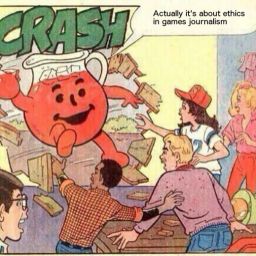
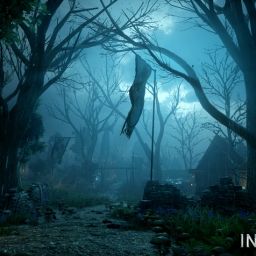
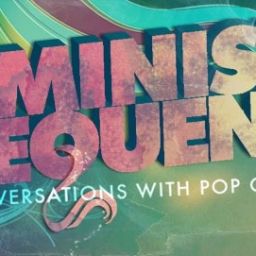
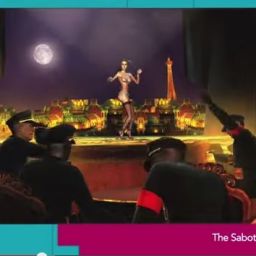
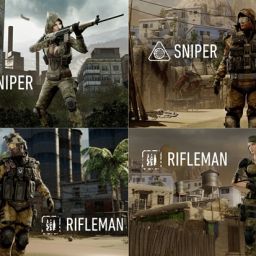
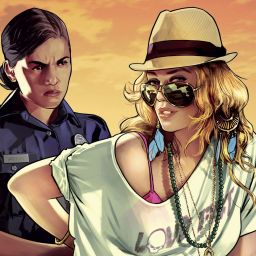
[…] move – it allows for more focus, more nuance, and avoids the problem of rapid-fire lists. My write-up for TLF is here (includes links to video and […]
Aha, just watched the video(stumbled upon it), or at least half of it because it sounded like a review for a really lame game. And thats a rpg-er talking. I’m a bit upset by the fact that from what understand, this feminist person, thinks a blank slate of a character, made of blobby pixels, who has the most value in death is a good female protagonist. I’m also mildly offended that she states that those playing it would automatically assume its male; as a general rule, if you play rpgs, the character is you: unknown gender-then its your gender, gender stated-you’re a badass with the opposite gender.
Point is, this is a terrible example of female protagonists and the video comes off as a really biased review, this coming from a person who isn’t that familiar with her work, is female and is annoyed at the disabled comments there.
Maybe I’ll keep an eye on the series now and report back here, but so far it doesn’t seem promising.
I shared a lot of your frustration – “You’re doing a series on good female characters, and THIS is what you kick it all off with?” It just seems like a toss-away, and while I understand that it is in some way important that the default is female, that’s not a good example of a GOOD female protagonist.
The disabled comments are for good reason, though, in her defense. It’s disabling comments or endure a litany of abuse and threats. I’d disable comments if I were her, too.